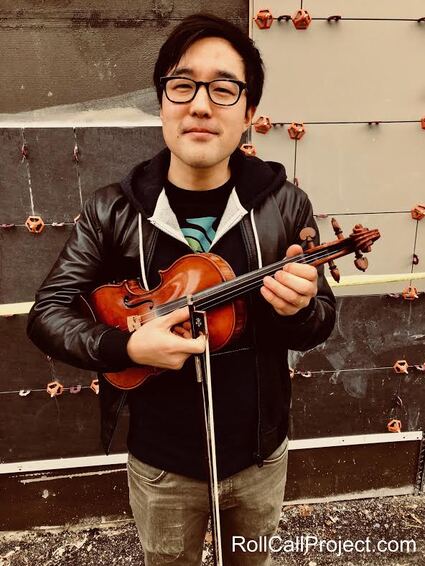 Years in education: 4 Korean American immigrant Male Straight First Generation American Former high school English, Comparative Religion, and Race & Ethnicity teacher Q: What did you have in common with your students? A: I'll start with what I did not have in common: wealth. I was the son of poor immigrants, and while I had some educational privilege vis a vis my father, who was a grad student at the University of Washington, we struggled to pay our rent, rarely went out to eat, and exclusively shopped the clearance rack at the Gap. So when I started teaching high school English at the Overlake School, a private school in the heart of Microsoft Country, it was hard to ignore the the luxury brands, top-flight tech gizmos, and general (mis)understanding that success was wholly earned, not inherited. Accompanying any such bastion of pooled resource, of course, was racial homogeneity, and the subtler microagressions and self-inflating savior complexes that serve as an undercurrent to interactions with the Other. And yet as I spent more time there, getting to know my students more personably, I began to witness the suffering that unites us all. Sure, one of my homeroom students' families collected Ferraris, but what was there to enjoy when dad was moving across the country after a nasty divorce and brother had left for college, the family splintered and dispersed? And while I, with greater access to the American Dream than my parents, felt burdened with the need to achieve status and monetary success, validating my parents' sacrifice, these students were in a pressure cooker of their own, surrounded by competitive, wealthy, high-achieving parents who expected their kids to attend an Ivy League school, then go on to realize their obvious genius in realms of business, law, tech, or science. It was this realization, that our worldview as children, no matter where you come from, is limited by that of our parents and our surrounding community, that I began to accept their social blindspots as the target of my mission as an educator, not as evidence of willful negligence rendering them undeserving of my energy or care. I had to overcome my own biases and insecurities regarding class in order to be a more complete educator. Sure, it tested my patience when a student dismissively asked in reference to reservation-bound Native Americans, "Why don't they just leave?", but when I considered the students' lives--family vacations on Kauai, a car for almost every sixteen-year-old, an out-of-state liberal arts college expected, they needed nothing more than to ask that question, and for me to reply as best I could with the reality of our time. Despite the homogenous environment, there were a handful of students that more readily shared my life experience: students of color, and students receiving financial assistance, although the latter were less visible. Most of the former were of East and South Asian descent, so I think it was especially affirming to see someone that looked like them bucking stereotypes in tech country: in his twenties, teaching Literature in a department full of middle-aged white women; coaching sports; singing with the high school choir during free periods; hackey-sacking with the skater kids during lunch; leading a singing-songwriting workshop during project week; and eventually, leaving behind a stable career in education to pursue a life as a independent musician. One student, a reserved Asian-American boy whom I also coached, made sure to pull me aside before I left the school in 2013. He thanked me for coming to Overlake, and told me that having me around was immensely helpful for his confidence, and helped stabilize his sense of identity. Q: Does it matter that students and teachers have things in common? A: People who don’t understand that representation matters—especially during childhood, when students are constantly assessing any social limits to self-actualization —are usually those who saw themselves reflected everywhere, from CEO to lovable chimney sweep, rock n roll star to geneticist, pro athlete to high school teacher. It is essential that students have teachers that reflect their identity, be it race, gender, sexual orientation, or interests. Students who feel underrepresented in their school setting will feel further alienated if there are no adult educators that can instill confidence, affirm their individuality, and remind them that, despite social labeling, you alone will construct your identity. This isn’t to say the only effective educators are those that look and think like you. It’s important to have opposing philosophies and a diverse array of ideas and identities—often it’s the search for commonality that can lead to a great teacher-student relationship. But as things stand now in both public and private school sectors, there are few teachers of color, let alone those given the social and financial resources to affect true change within school settings. We need to be recruiting, training, hiring, and retaining underrepresented teachers, and aggressively correcting systematic barriers that stand in the way. Joe is a violinist-looper, singer, rapper, and storyteller who weaves his experiences as a Korean-American immigrant and high school teacher throughout his innovative performances. He has opened for world-renowned cellist Yo-Yo Ma, rapper Warren G, and Senator Bearnie Sanders. ROLL CALL founder Kristin Leong interviewed Joe about the joy and heartache of being a bicultural artist for KUOW Public Radio. Get a behind-the-scenes look into their conversation and listen to the 8 minute audio feature here. Learn more about Joe and stay up to date on his latest tour schedule at joekye.com. Photos (c) 2019 Kristin Leong ROLL CALL founder and KUOW Public Radio producer Kristin Leong with Joe Kye in the recording studio at KUOW in Seattle, January 2019. Listen to the audio feature Kristin produced about Joe here.
0 Comments
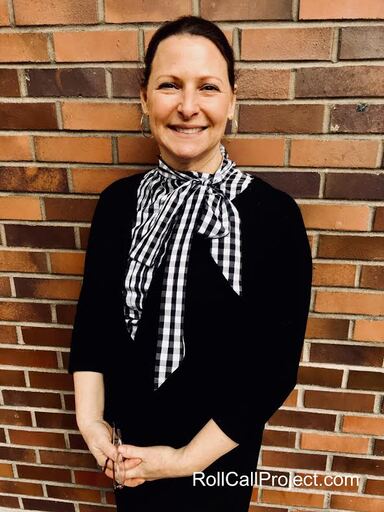 Years in education: 20+ White Female Heterosexual Depressed Former K-12 teacher and principal, current History of Teaching as a Profession university professor Q: What do you have in common with your students? A: On the surface, one might assume I have very little in common with my students beyond trivial things like loving pizza, hot baths, and cute animals. I'm a cisgender white woman who grew up privileged. However, I suffer from severe depression. This connects me to so many of my students today in ways that are deep and meaningful. Professors often hide their neuroses behind their credentials. I like to use this bully pulpit to daylight my reality - and the reality of so many others living with mental illness. Q: Does it matter that students and teachers have things in common? A: I've found that sharing vulnerability and pain is the most powerful (and honest) way to connect with my students. I don't come right out and share this information. Just like any other relationship, I want to make sure the time is right - or it comes up organically. Once I share that I went into a deep, dark depression in my early 20s and that I was able to emerge from it thanks to therapy, medication, and some very ugly moments, something shifts in the classroom. Students reach out to me for support all the time. I've counseled them on resources on campus, driven them to hospitals in a crisis and reassured them that they can live a full, happy, "successful" life while managing a mental illness. Kimberly is a Professor at a research university. She is the author of Experience Inquiry: 5 Powerful Strategies, 50 Practical Experiences. She was formerly a Bill and Melinda Gates Foundation Senior Program Officer, Director with Teach For All, and school principal and K-12 teacher. Connect with her on Twitter @inquiryfive. Photo (c) 2019 Kristin Leong 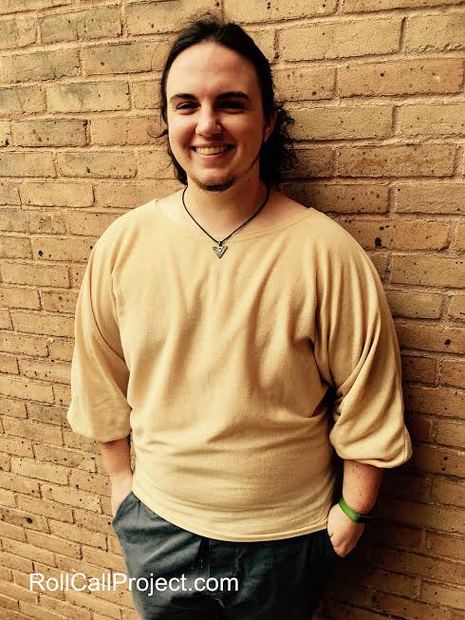 First Year Teacher White Queer Transgender 8th Grade Reading Teacher Q: What do you have in common with your students? A: Being openly gay and transgender in the classroom was simultaneously the easiest and most difficult decision I’ve ever made. I never had any teachers who were openly LGBTQ, so when I came out as transgender, I made a promise to myself that when I became a teacher, I wouldn’t allow myself to be closeted and risk letting a single student go through my class feeling like there was something wrong with them or like they had to hide who they were. At the start of this school year, a student introduced himself on “Meet the Teacher” night and explained that he was transgender and went by a different name than was on the roster. It was an instant flashback to having to talk to my professors on the first day of class, fingers crossed that they didn’t react negatively. So I told him what I would have wanted to hear—to let me know if his pronouns or name ever changed and that I’d support him however I could. On Monday, he introduced his group of friends to me. By the end of the second week, over a dozen of my 8th graders had come out to me. By the end of the month, they had started bringing their friends from other grades to be introduced. Before the end of the first quarter, I had students that I’d never even met before coming to my room and asking, “You’re the trans teacher? Can we talk?” Q: Does it matter that students and teachers have things in common? A: Finding common ground with our students is essential to our jobs as teachers. When we see ourselves reflected in someone else, it helps bring us together. One of my main goals in stepping into the classroom was to make sure that my LGBTQ students had the openly queer adult role model in their lives that I so desperately needed in my life growing up. Being a middle schooler is difficult but being an LGBTQ middle schooler takes even more strength and courage. Growing up, I didn’t have the vocabulary to describe what I was feeling; I didn’t add the words “gay” and “transgender” to my vocabulary until I went to college—I just knew that the way I felt wasn’t what everyone else was experiencing. I didn’t think any of my teachers would understand, so I never reached out to them about the anxiety and confusion I was feeling over my identity. So despite the difficulties that being out in the classroom can pose, I live my truth so that my students feel empowered to do the same. I’ve lived their fear of being discovered, their hopes for acceptance, their pains of rejection, their dreams for a safe space—they see me, and know that I see them, that they aren’t alone, and I think that makes all the difference. One point of common ground has turned my classroom into a safe space for so many students that otherwise might not have felt secure enough to open up to me, so just imagine the endless possibilities if we work to find even more in common with our students. Eoin (pronounced "Owen", he/him) teaches in in southern-most tip of Texas in the Rio Grande Valley on the US/Mexico border. Connect with him on Twitter @eoinstein. Photo (c) 2017 Kristin Leong 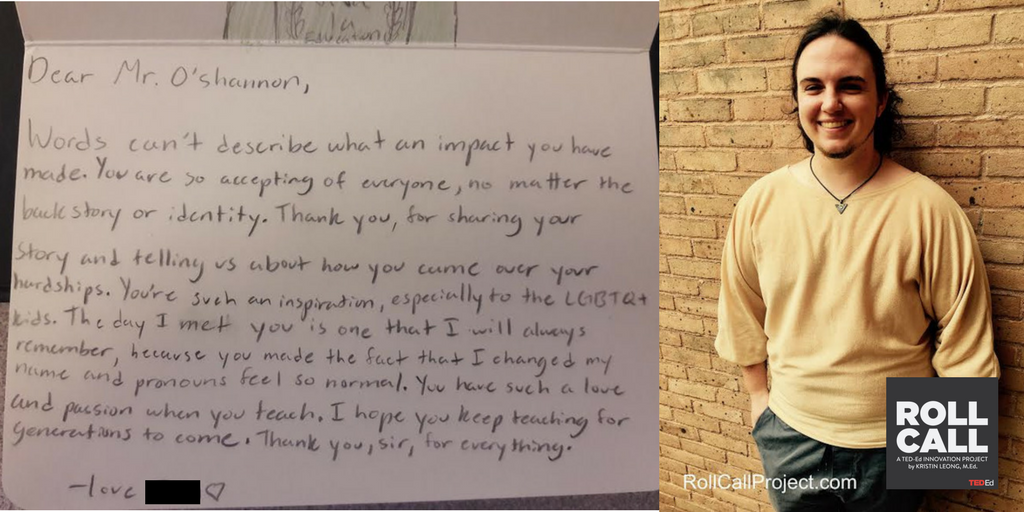 Dear Mr. O'Shannon, Words can't describe what an impact you have made. You are so accepting of everyone, no matter the backstory or identity. Thank you, for sharing your story and telling us about how you came over your hardships. You're such an inspiration, especially to the LGBTQ+ kids. The day I met you is one that I will always remember, because you made the fact that I changed my name and pronouns feel so natural. You have such a love and passion when you teach. I hope you keep teaching for generations to come. Thank you, sir, for everything. 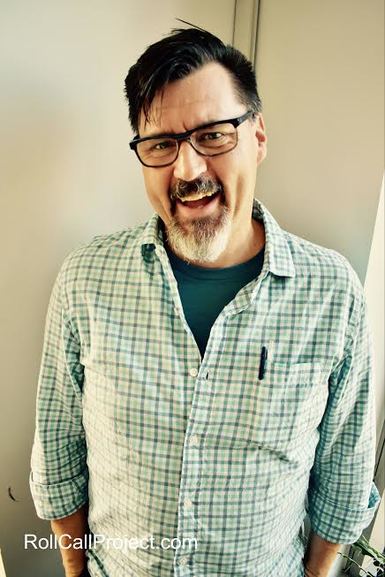 Years in Education: 7-10 Male Heterosexual Caucasian First in Family to Graduate From College Upper Elementary & Lower Secondary Math, Language, and Media Literacy Teacher Q: What do you have in common with your students? A: There is an archaic notion that an educator must have all of the answers in order to merit their rightful place at the front of the classroom. I think that idea is B.S! Or as my mom would say, "Bologna Slices!" Educators should avoid this trap at all costs. It is divisive and contrary to an engaging learning environment. It only serves to separate the one with the answers from those who are there to seek them out. At the heart of my instruction emerges a multi-strand rope that is threaded by students from all of my classes. We share care, kindness, responsibility, and otherliness within an environment of co-lead learners. In other words we create community, and share a collective duty to grow and strengthen it in common. In my opinion, sharing something in common like this with students must come first before any real learning becomes possible. Hence, why community building is at the foundation. If education was merely about compliance then it would quickly digress into indoctrination instead. Students need to know how much I care before they will be asked to care about what I know. Once established community can protect, support, challenge, be safe to fail, and succeed. Along the path, we become witnesses to the strengths and weaknesses of everyone. I am modelling my own humanity and incredible abilities to make mistakes alongside of the students. We become relentless encouragers of one another. We find the positive in the learning even when it looks like a train wreck in the process. Q: Does it matter that students and teachers have things in common? A: Long answer: It absolutely matters that students and teachers share things in common. We are a people longing to connect, whether it is on a superficial level of eating at the same restaurants and liking the same music, or at a deeper level of human struggle such as a compassion for social justice issues it is crucial that teachers and students have things in common. When we connect in school, we create community. When we create community, we create a caring classroom. Short answer: Yes. Will is part of the original cohort of TED-Ed Innovative Educators from around the world. Follow his adventures in teaching and learning on Instagram @imagemined, through his escheweducationalist blog, and on Twitter @WillGourley. Photo (c) 2017 Kristin Leong  Years in Education: 4-6 White Cisgender Woman Queer Middle School Social Studies & Social Justice Teacher Q: What do you have in common with your students? A: There are layers to what my students and I have in common. Many of my kids are white. About half are girls. Most are cisgender. A handful are queer. And those, the first spokes on the intersectionality wheel, matter. The world hits us in similar ways, and we can immediately and visibly relate to each other’s experiences. But I’m not sure those are even the most important ways in which we are similar. I, apparently, have the sense of humor of an average middle schooler. Recently, a kid asserted that vegans had to be “tall… to get to the leaves at the top of the trees,” and I still haven’t really stopped laughing. We share a genuine and sincere appreciation of the importance of birthdays. We agree that sometimes it’s better to run outside in the snow and try to catch it than it is to just watch it fall. Honestly, I think what we share the most is a genuine interest in each other. They want to know the people they spend hours with every week, and I want to know and understand them. Together, we want to understand the world, the people in it, and the choices we all make. We don’t always agree, but we are certainly bound together by our mutual curiosity. In my social justice class (an elective that I started last year), this is especially true—and in that case, we’re also bound by a true passion for the subject. I just did a survey yesterday, asking my social justice students about their willingness to participate in a high-risk, quite vulnerable activity. I explained the activity in detail, and I gave them an anonymous survey. If even one person did not want for the activity to occur, we wouldn’t do it. If anyone wanted changes made to the activity (for example, changing or removing some of the questions asked), I’d make those changes. They have all opted to participate in the activity, and we’ll take that courageous leap on Monday. It may be hard, but I know that we’re all taking care of each other. With the kids with whom I have the deepest connection, what we share is a willingness to be vulnerable. We’re learning together, exploring the world and its intricacies as we go. Ms Frizzle (the greatest role model of my life) advises her students to “take chances, make mistakes, get messy!” and I think following this life approach together is an important point of connection. Q: Does it matter that students and teachers have things in common? A: I’ve struggled with this question, because I feel equally and passionately that there are two truths that seem to directly conflict: 1. Of course it matters. Students should be able to see people like themselves represented throughout their lives, and that’s especially important when those people are in “role model” positions. 2. No, it doesn’t matter; what matters more is a genuinely caring relationship. I don’t have to have your experiences to care about them, and to believe you when you tell me about them. I think the reality is that Truth 1 helps facilitate a movement toward Truth 2. If kids can tell immediately that you share something in common with them, or if they learn about it, they’re more willing to trust the teacher. But if a teacher can communicate true regard for their students, in a way that students truly feel, then that can overcome a lot. A couple of years ago, I had a wonderful, quiet student in my class. She was reliable, kind, bright, and just a genuine pleasure. She isn’t one who would stay after class and talk, but we had a positive relationship. A year later, I had her younger brother as a student. When the sister saw my name on his schedule, she assured him, “Oh, you’ll like her. She’s really LGBTQ-friendly.” The brother is trans, and his best friend—another student of mine that year—is non-binary. Before they even arrived in my classroom, they already knew that I would… see them. I’m cisgender, and very feminine, but they knew that I could be their ally and advocate. The messenger matters, certainly—but I think the message matters even more. Litza is the founder of her school's popular Social Justice elective. Photo (c) 2017 Kristin Leong 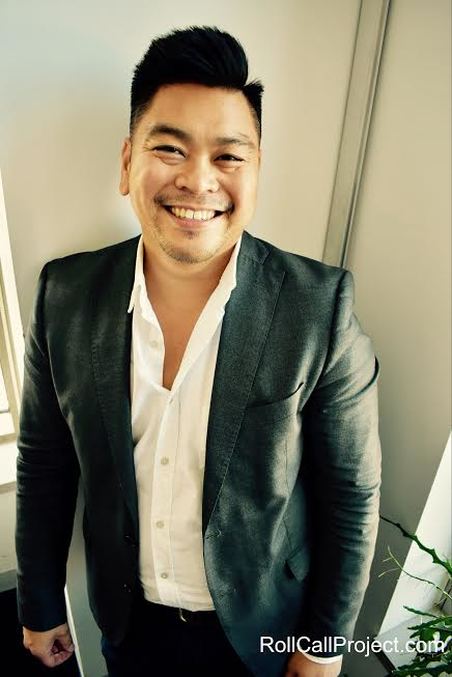 Years in Education: 11--15 Male Gay Filipino American Upper Secondary English Teacher Q: What do you have in common with your students? A: This is my eleventh year teaching, and in these eleven years I've taught in Mountain View, CA; Rome, Italy; Bonn, Germany; Buenos Aires, Argentina; and now Sofia, Bulgaria. I share this because the cultural contexts of the places I have lived and the make up of the student body of each of the schools have been incredibly diverse. In California, the public high school had over 2,000 students from grades 9-12. Students were predominantly White and Asian with a smaller Latino population and even smaller Black population. There was a large achievement gap that was largely divided by race. All the international schools I've worked at have had an average of 800 students from pre-K to grade 12. On average, 20% tended to be American, another 20% host country nationals, and the other 60% of students were a mix from over 40 nationalities. Over 60% of our students are non-native English speakers. Accents and linguistic mistakes are never made fun of. However, apart from a small percentage of scholarship students, most students and their families were wealthy enough to afford a ~$20,000/year education. For embassy children, their country's taxes usually paid for that. Many companies also paid for students' tuition as part of the relocation package. Depending on the context, I've had different similarities with my students. In California, the strongest commonalities were with other students who were immigrants or first generation making sense of a bicultural world - for me it was Filipino values and traditions inside my home and white America outside of it. I connected with the students that were assimilating to become white American, inadvertently assuming that American was better and even growing shame for my ancestral roots. Internationally, the term "third culture kid" is used quite often: the first culture being the culture the students' parents are from, the second is the current country they live in, and the third is the amalgamation of the two. This phenomenon is what we have in common - guests in a new world never fully connected with our home country or the one we live in. However, regardless of these varying cultural contexts I've lived in, one thing I have in common with some of my students wherever I am is my sexuality. As a gay man, I connect with my students that are either in the closet or are out and proud. We share a common thirst for safe spaces, constantly having our feelers out to ensure we have be ourselves otherwise passing for straight when we cannot. Living as an expat compounds the complexity of this as each culture has different laws and norms for the gay community. Q: Does it matter that students and teachers have things in common? A: Yes and no. Commonality has this powerful ability to build relationships. When I find out a student speaks Spanish or German or Italian, for example, I speak to them in that language to make that linguistic connection and share our cultural experiences. Ironically, commonality also as the power to create xenophobia. Too often, students from the same country will only hang out with each other because of the comfort in their similarities but also then to build negative stereotypes of other groups. Teachers are guilty, too, of having an affinity for students that we have things in common with sometimes letting those that we don't connect with slip through the cracks. Josefino is a TED-Ed Innovative Educator. Follow him on Twitter @josefinor and read about his expat adventures as a teacher abroad on Medium @josefinor. Photo (c) 2017 Kristin Leong 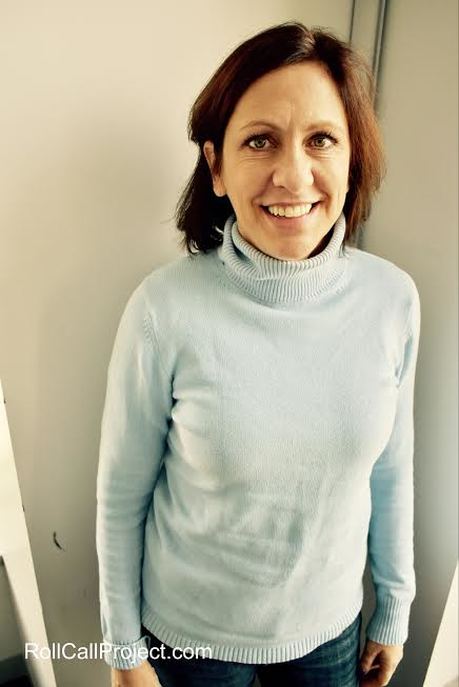 Years in Education: 20+ Jewish White Female First in Family to Graduate From College High School Honors Algebra, Pre-Calculus, Honors Problem-Solving Seminar Teacher Q: What do you have in common with your students? A: I have a love of puzzles, and most of my students do, too. If we have a few minutes left in class, sometimes I will pose a riddle and the whole class lights up. I have a play table in the back of my classroom with various puzzles and games from childhood, such as Connect Four or the Cracker Barrel Wooden Peg puzzle, and students often come to my classroom early to play. I love watching the light in their eyes when they work on puzzles either together or individually and solve them - it's such a good feeling of accomplishment when you get something on your own, or even with a little help from someone else. Growing up, I was surrounded by a lot of love, but there was also a lot of turbulence in my family. My mother was married and divorced by the age of 19, with me, her nine-month old baby, in tow. I grew up living with my extended family--my grandparents, aunts, and an uncle. My father was not really present for me. My mother was more like a sister. We fought constantly, and I always went elsewhere for solace. For me, math put me in the present moment; I could do math problems or puzzles, and all the issues I had with my parents would go away. I like to give students problems that take their minds off of the baggage they bring into the classroom - we all have it. And for a few minutes each day, students can smile at the delight of solving the riddle or of the trickery involved in it. Even if they don't have the commonality of liking math, I try to make it fun for them so that we all can share those moments of joy when they think, "Aha!" or "I get it!" Q: Does it matter that students and teachers have things in common? A: Yes, because when you instinctively see the problem that you had when you were growing up, you can help. For me, it was coming in with baggage or being a perfectionist. I work in a private school where most students strive for high grades. Personally knowing that sometimes you don't get the grade you think you deserve, I try to let them know that it will all be okay if they don't get that A on the first test. I even made a huge poster that says, "Everything will be OK," which I sometimes need to draw their attention to. But I have found that with math, it's not always about ability. I think the most important thing is letting them know that you believe in them. I had several adults in my life that thankfully believed in me, and I know that if a teacher thinks you matter or are important, your confidence soars in that class. Even if you don't have things in common, for example, race, ethnicity, or sexual orientation, every person deserves to feel important. As a Jew, I have been discriminated against, and I never, ever want my students to feel that way. My biggest priority in class, aside from getting the material across, is having a warm, inviting classroom for ALL students, whether we have commonalities or not. It's a privilege to be teaching my students, and I often learn more from them than they do from me. My job is to make them all shine, even if only for the moment that they are in my classroom. Lisa is a TED-Ed Innovative Educator. She is the creative genius behind many brain-bending TED-Ed lessons such as Can you solve the locker riddle? and Can you solve the virus riddle? Follow her on Twitter @Lisaqt314 . Photo (c) 2017 Kristin Leong 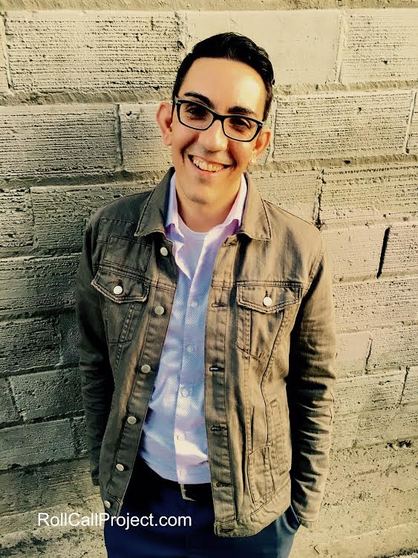 Years in Education: 4-6 Middle Eastern Male Heterosexual Immigrant Film and Mass Media Community College Instructor Q: What do you have in common with your students? A: I am a product of the community college system. I emigrated to the US in 1994, and ended up in upstate NY. I was 19, nervous about being in a new country, and had no idea what I wanted to do with my life. Community college was instrumental in my life. It introduced me to many academic fields that interested me (and some that didn’t). I enjoyed philosophy, and sociology. But it was theatre that won my heart and soul. It was theatre, and the teachers who taught it, that made me believe in myself, and pushed me toward success. It is a rare occurrence when I get a student in my class who’s from the Middle East, so I don’t usually have any ethnic similarities with my students. But I have so much in common with my students. Some of them are international students, and I recognize their difficulty in navigating a system they might be unfamiliar with, a culture that may seem alien, or a language that they haven’t quite mastered yet. Some of my students don’t know what path they want to take in life, and may lack the confidence it takes to be successful. I know that feeling, and lived through many uncertain times in my life where I doubted myself. I’ve failed again and again on my way to success. Some of my students go through these times of self-doubt. I know what that feels like. I had a full time job while going to college, and I took out student loans. It was difficult to make ends meet, and pay for college at the same time. Some of my students are juggling college work, full time jobs, and kids. I know what that feels like as well. I’ve lived it. I also share a love of culture with my students. Listening to music, (event though we may listen to very different things), watching films, playing video games, watching sports, reading books, and listening to podcasts. There is so much that I have in common with my students. Community college is a wonderfully diverse arena that brings people from all walks of life together. It is a manifestation of what America looks like. If we listen hard enough, the similarities are deafening. Q: Does it matter that students and teachers have things in common? A: This question gives me pause. Because we all have things in common with our students and teachers. The question is how much are we willing to look for them? It’s important for a student to see part of themselves in their teacher. It strengthens the personal bonds, and make it easier to succeed. The best teachers I remember where the ones who truly cared. I had a teacher in grad school who took the time to read Thomas Friedman’s “From Beirut to Jerusalem” in order to understand my background, and what I and my family may have gone through before arriving in the US. That meant the world to me, and made me want to work harder. Because I knew that she cared. She showed me that even though we come from very different backgrounds, we both shared a sense of curiosity, empathy, and that longing for human connection. A racial similarity with my students is an easy one to find. But I like to look for other similarities. And once I find them, learning and teaching become more enjoyable, and more meaningful. In addition to being a teacher at Everett Community College, Zaki is also Humanities Washington's Program Director where he oversees the Think & Drink and Speakers Bureau programs which are held across the state in partnership with libraries, museums, schools, historical societies, bars and wineries, and more. Connect with Zaki on Twitter @ZakiSeapod and find his Humanities Washington events at Humanities.org. Photo (c) 2017 Kristin Leong  Years in Education: 20+ Black + White Straight Male Former K-12 Teacher Current Hip Hop, Sports Culture, and Intercultural Communications Professor Q: What do you have in common with your students? A: One commonality I share with my students is the relationship of learning that flows freely between us. The student-teacher dynamic is sometimes viewed through a didactic, one-way lens which suggests classroom learning runs in a single direction: from teacher to student. As someone who has literally taught all levels from kindergarten to graduate school over the course of 25 years in the field, I can say without hesitation that I’ve learned far more from those students than they could have ever learned from me. Being a black male kindergarten teacher in the 1990s, I may have seemed like a unicorn to public schools, but at Zion Preparatory Academy I was just one of a number of African American men working in K-5 classrooms. Lessons from both the personal and pedagogic relationships with those 5 and 6 year-olds, which included the intentional building of “academic self-esteem,” have helped make me the teacher I am today. Another thing we have in common is a desired outcome of success. While I have seen very few, if any, students who truly did not want to be successful, I have come across a number of teachers who, either by theory or practice, express expectations and a professional cynicism which amounts to removing the wings from an airplane then expecting it to fly. The argument that these negative attitudes on the part of the teacher can be subconscious does not minimize the damage done, and in fact only emphasizes the need to practice rigorous and regular professional introspection. A genuine expectation of success, even if it is not achieved by all, still allows students to operate within a context of authentic teacher investment. Q: Does it matter that students and teachers have things in common? A: Yes, it does. The follow-up question is: What are those things? For example, much has been made about the relatively low numbers of teachers of color in the United States. However, I’ve seen firsthand that being a person of color is not an automatic qualifier to be an effective teacher for students of color. On the flip side, I have also witnessed proof that being white does not automatically disqualify one from effectively educating students of color. In all cases it is the educational professional’s responsibility to initiate and nurture ties with students, which then can provide the proper foundation for relationship scaffolding. Daudi Abe is a Seattle-based professor, writer, and historian who has taught and written about culture, race, gender, education, communication, hip-hop, and sports for over 20 years. He has appeared on national media such as MSNBC and The Tavis Smiley Show. His forthcoming book is Emerald Street: A History of Hip-Hop in Seattle. Learn more about Dr. Abe at drdaudiabe.com. Photo (c) 2017 Kristin Leong 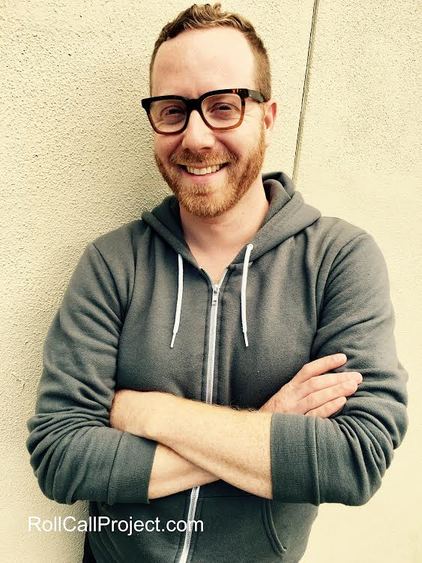 Years in Education: 7-10 White Heterosexual Male High School English and Theory of Knowledge Teacher Q: What do you have in common with your students? A: I work with students whose identities and backgrounds are largely very different from my own. Their life experiences and their relationships to school are shaped by a set of cultural, socio-economic, and institutional factors that I can't claim to have a full understanding of. That said, I think what we have in common is our interdependence, our vulnerability, and a deep curiosity about the world around us. These things might manifest themselves differently in each individual but I think they're universally present and it only takes a little relationship building and a bit of digging to start to see them emerge. When my classroom is functioning at its best, these are also the factors that drive everything we do. Q: Does it matter that students and teachers have things in common? A: Definitely. The points of commonality are what allow us to see ourselves in one another, and from there to a greater understanding of how valuable our differences are. Colin is the coordinator of the International Baccalaureate Diploma Program at Rainier Beach High School in Seattle where he is also the Building Leadership Team chair. Learn more about Colin's work and how the IB program has transformed Rainier Beach here. Photo (c) 2017 Kristin Leong |
ROLL CALLHumanizing the gaps separating teachers and students. Archives
October 2019
Categories
All
|
Proudly powered by Weebly

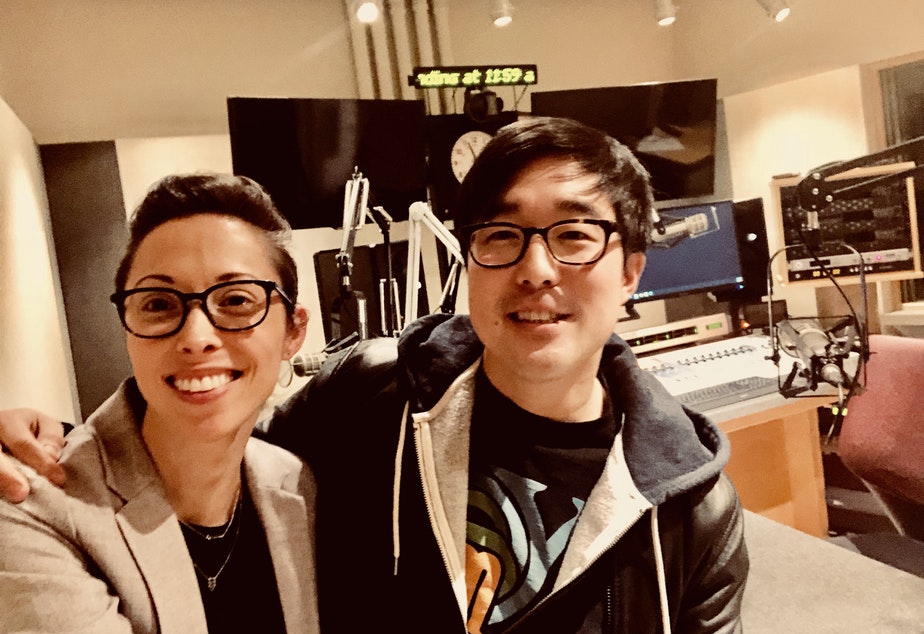

 RSS Feed
RSS Feed